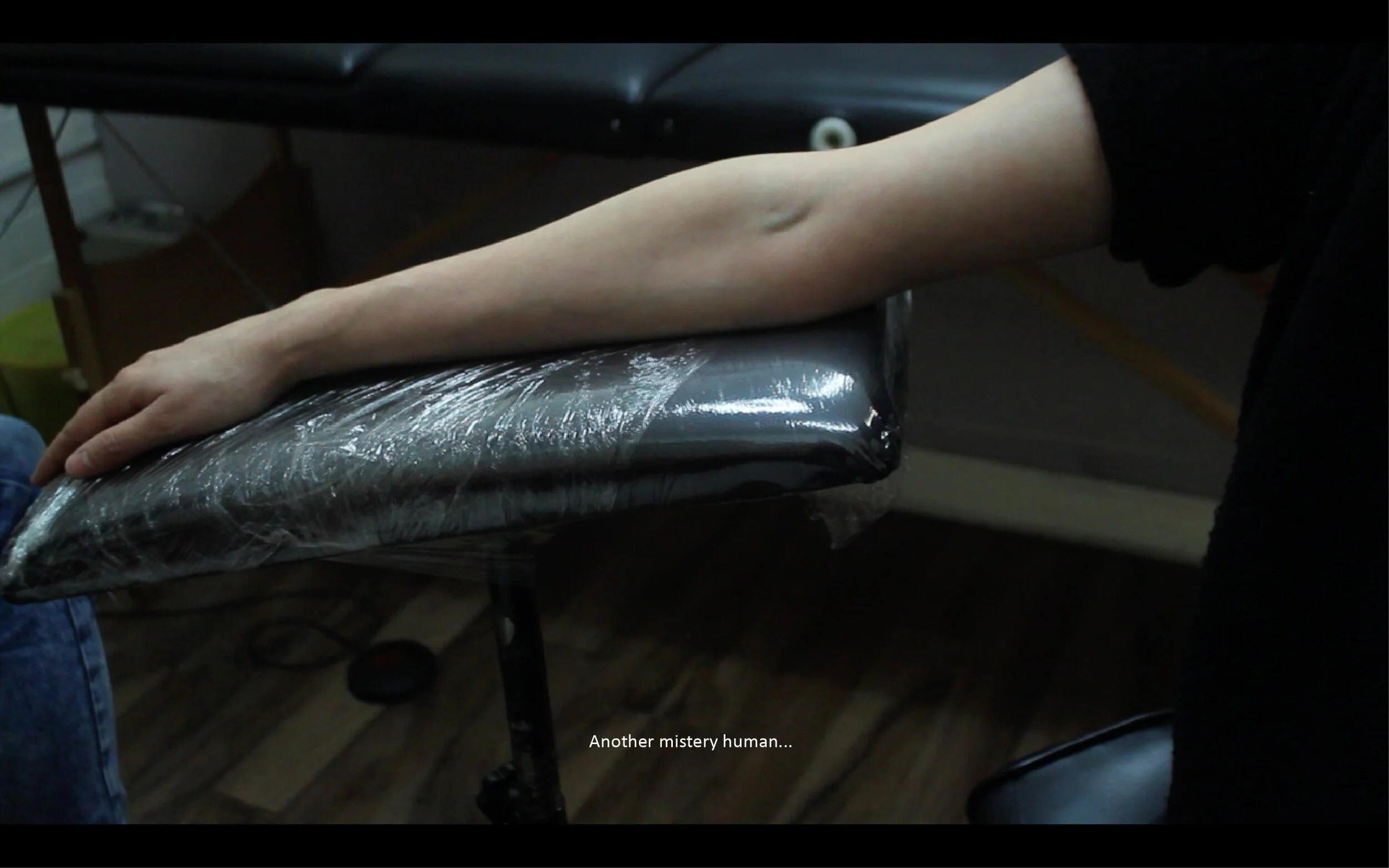
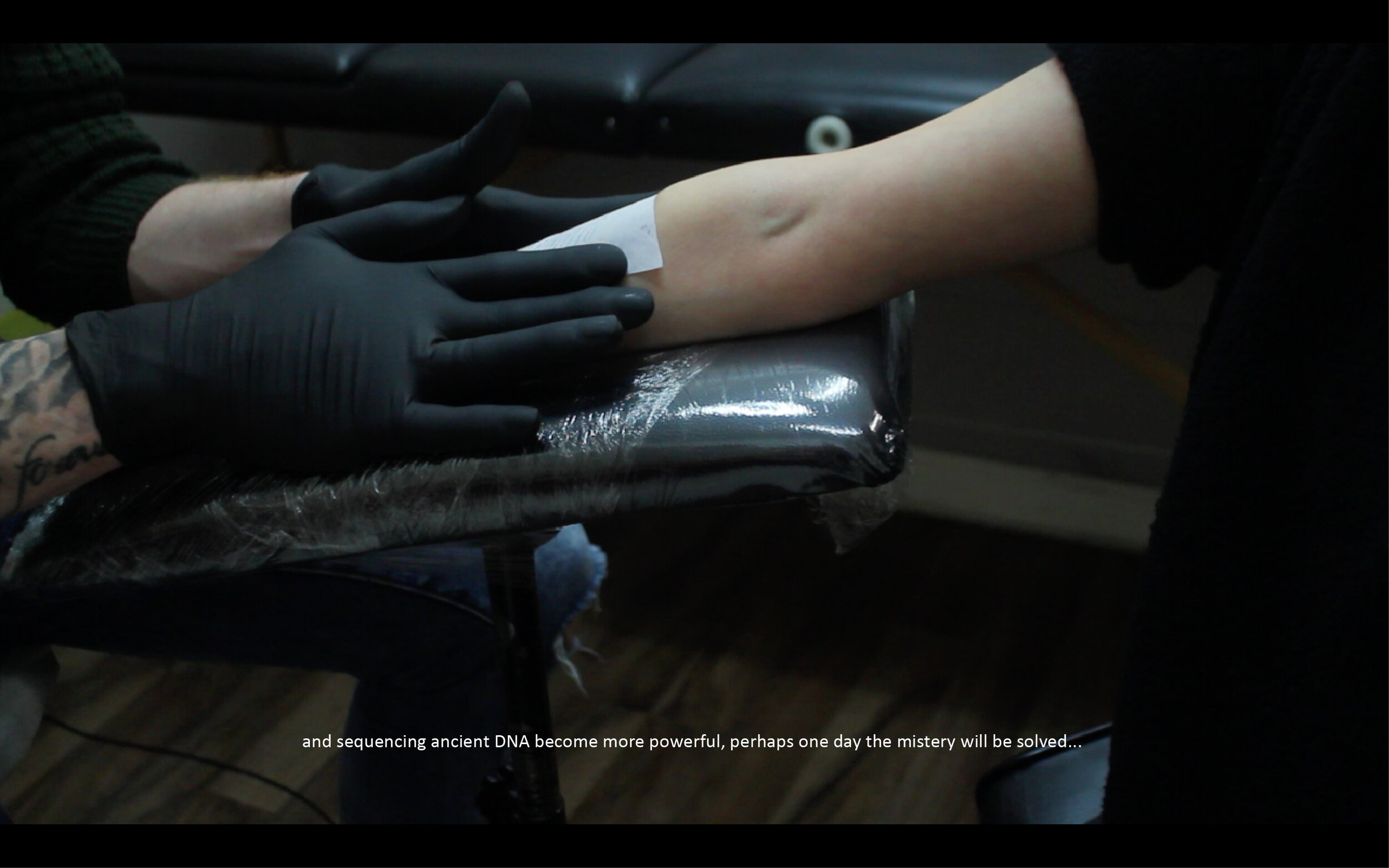
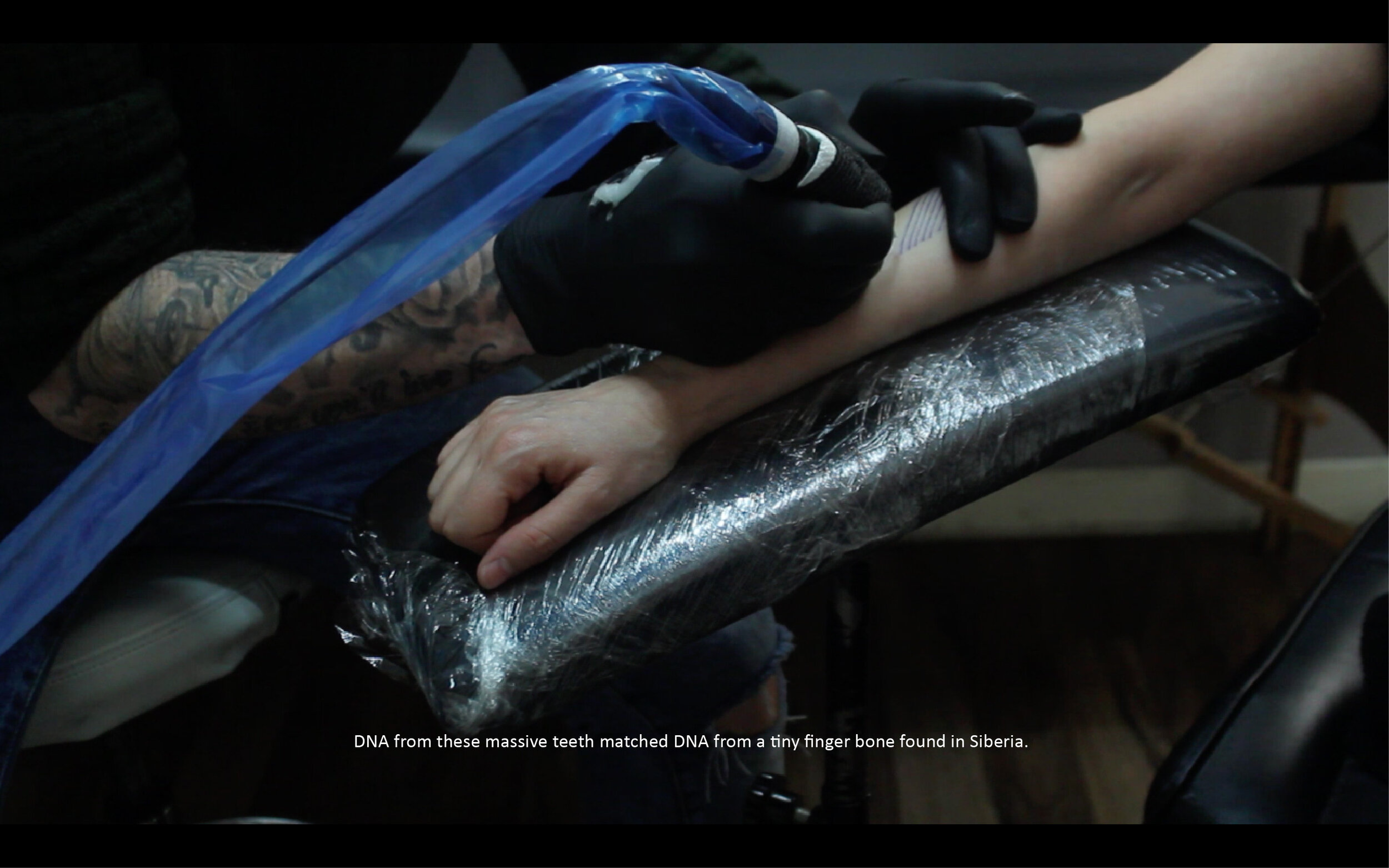
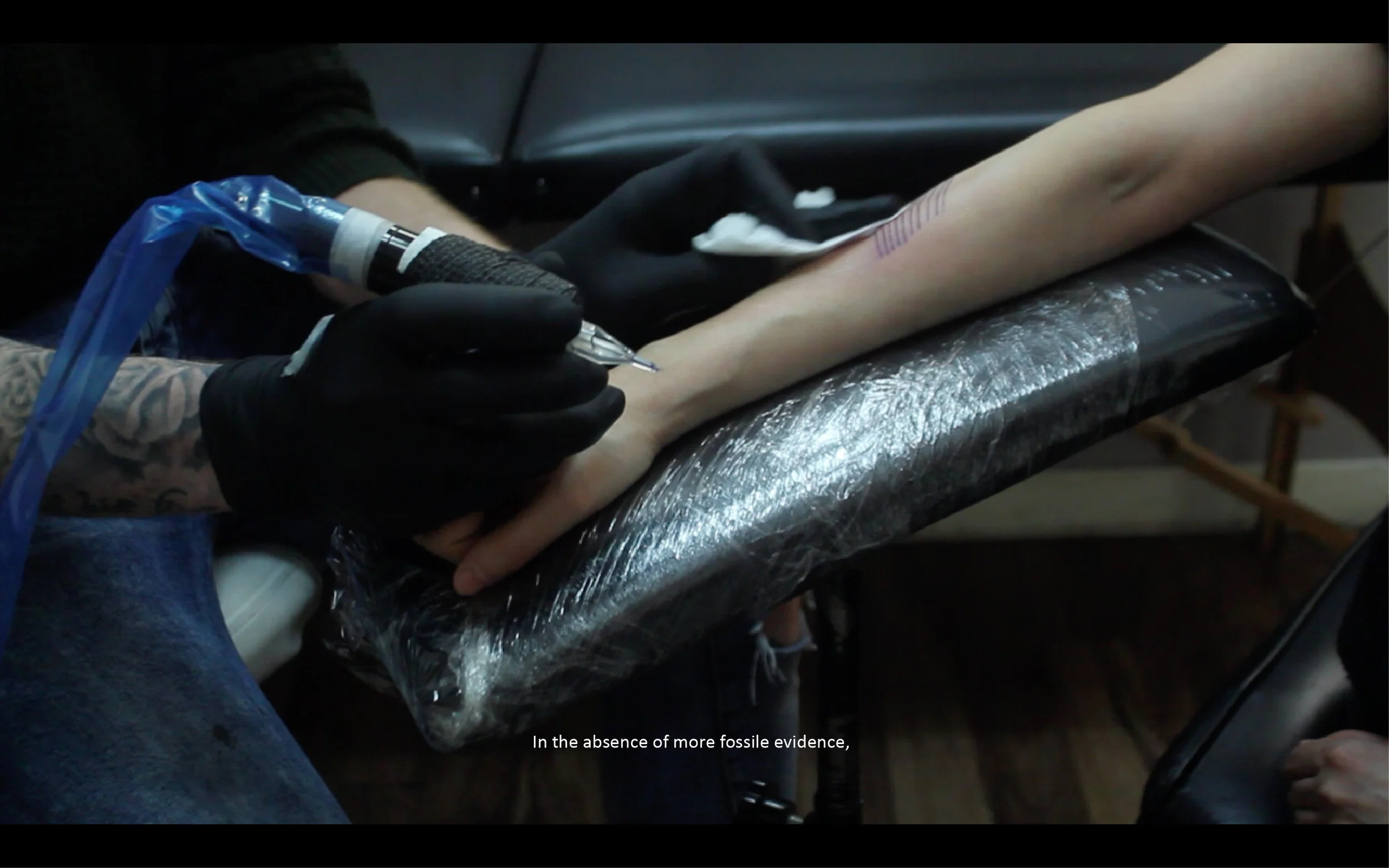
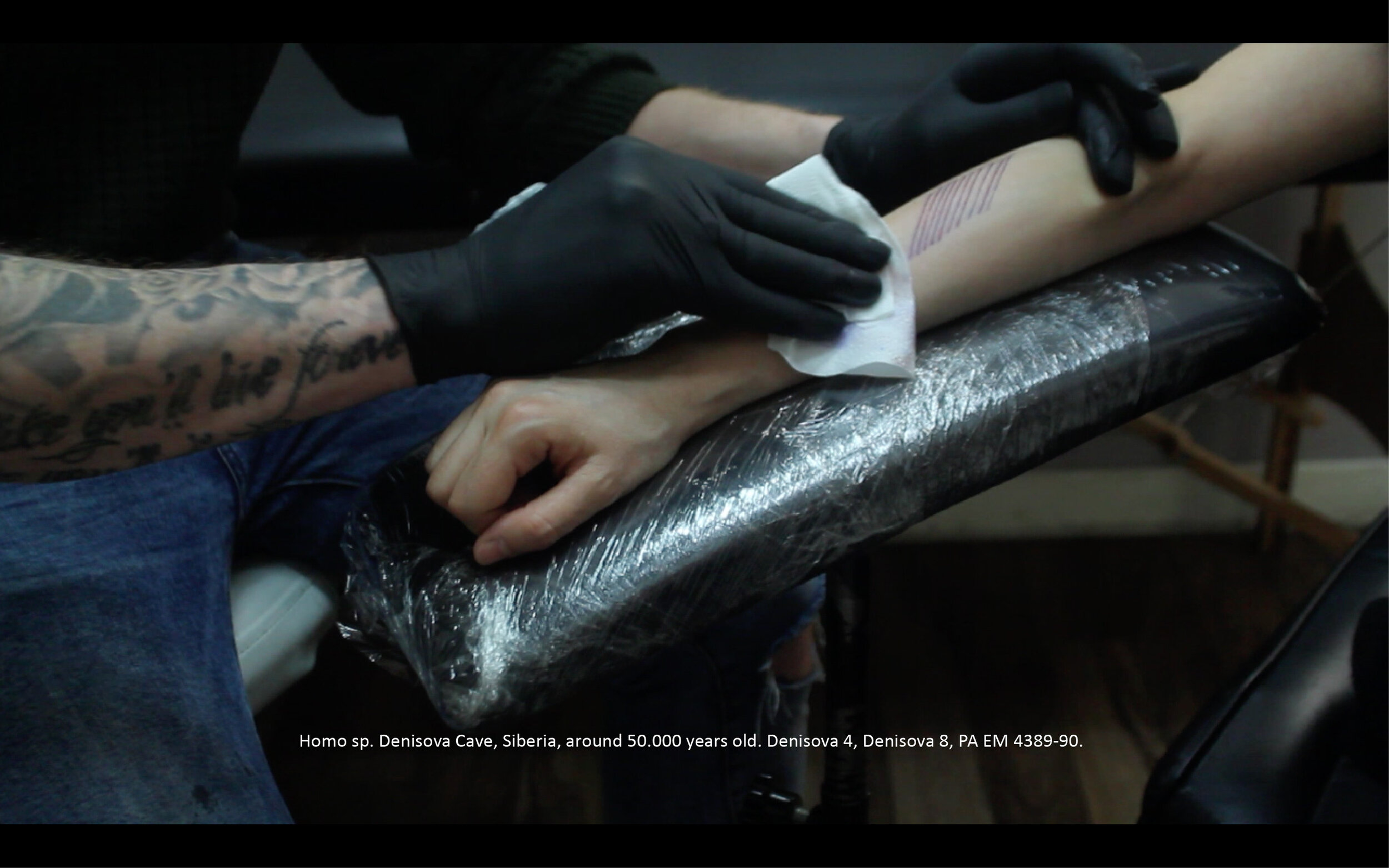
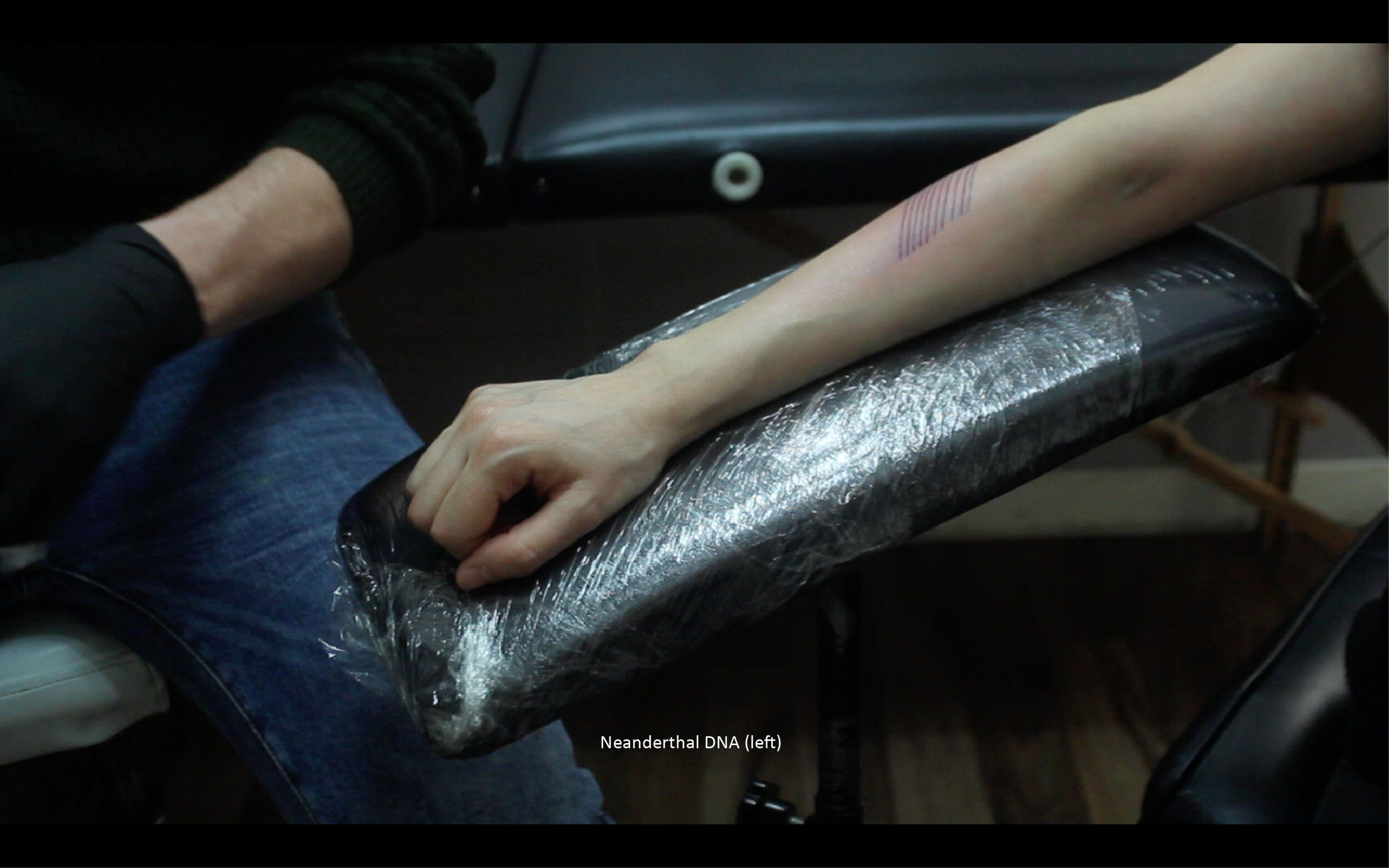
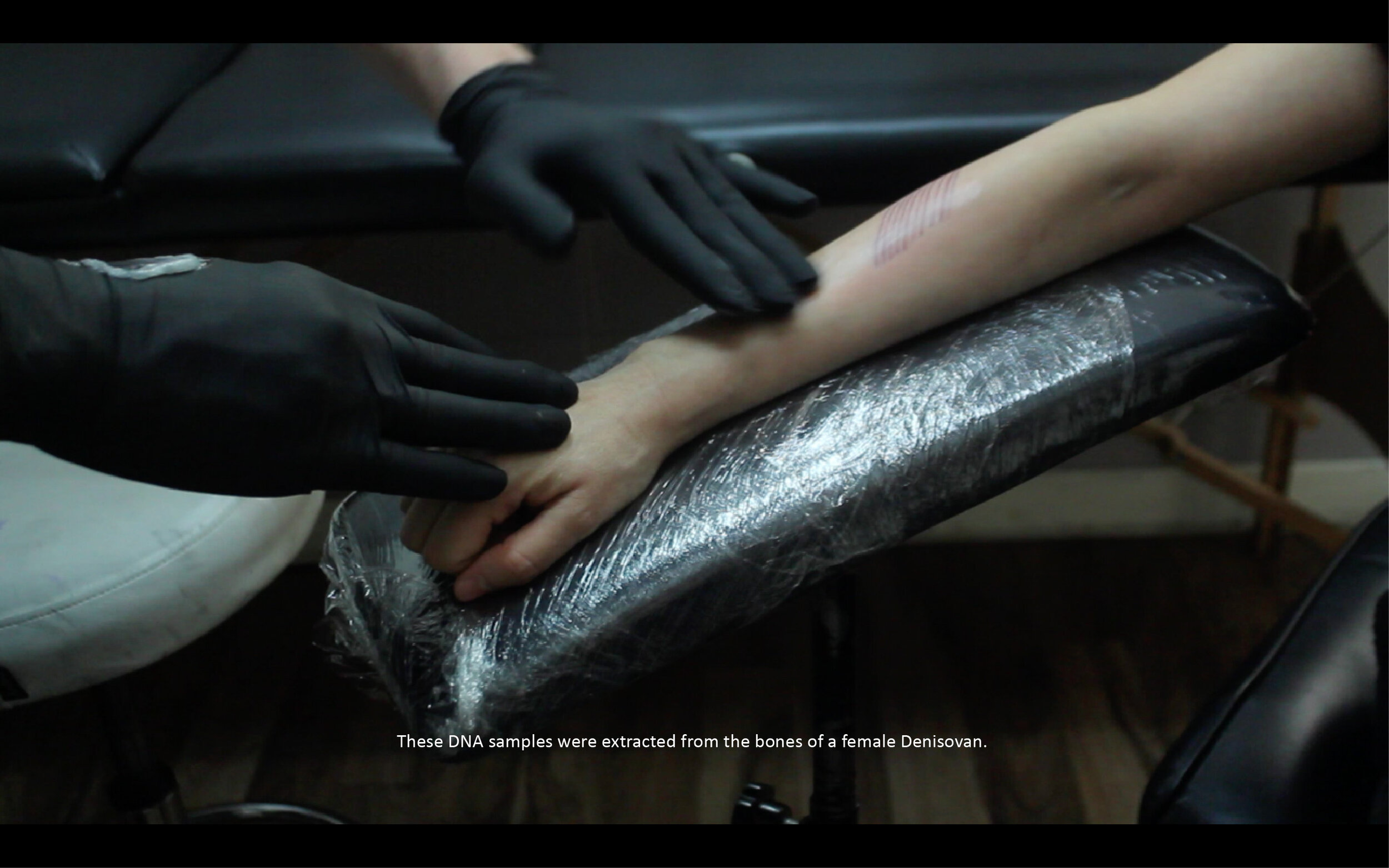
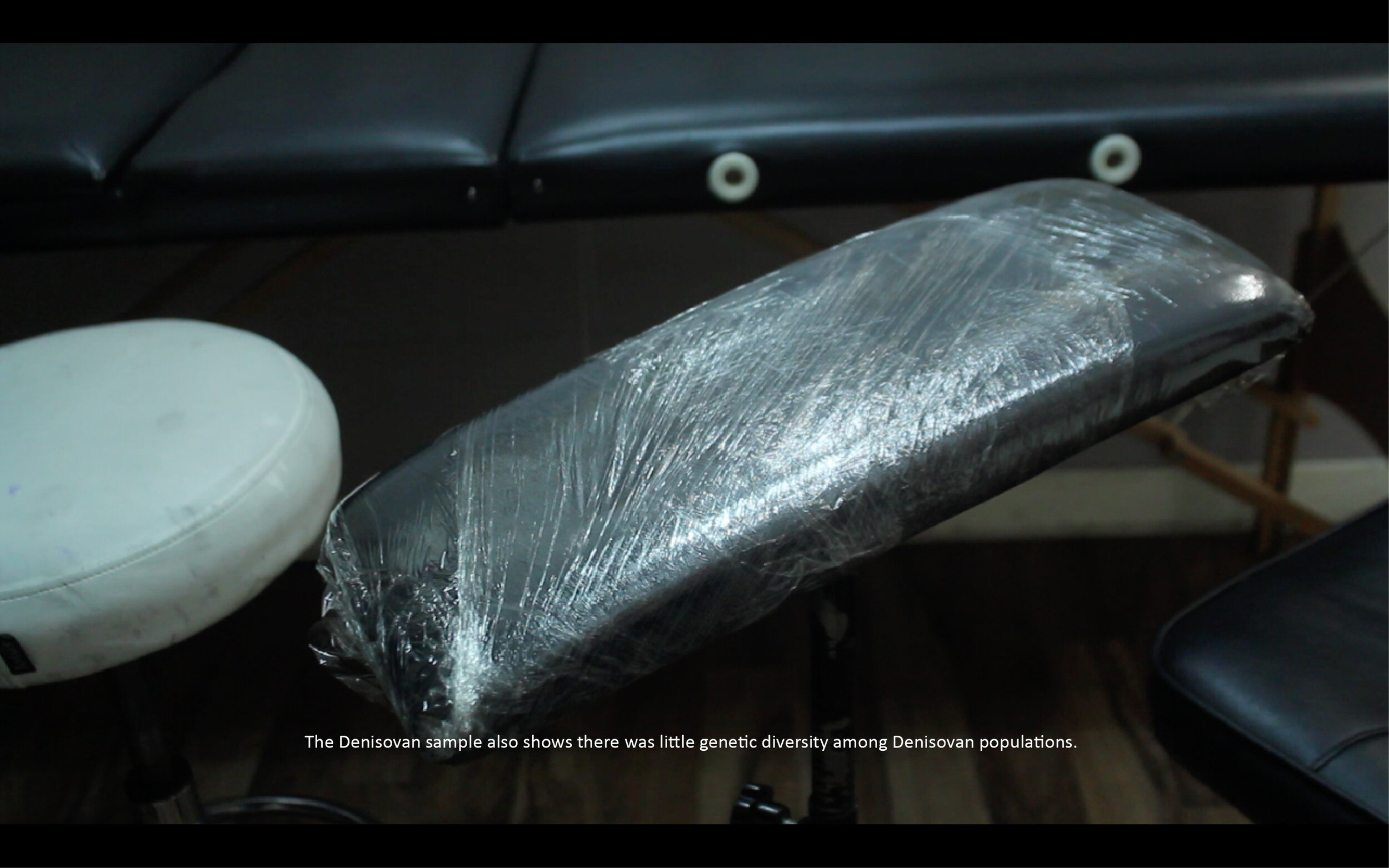
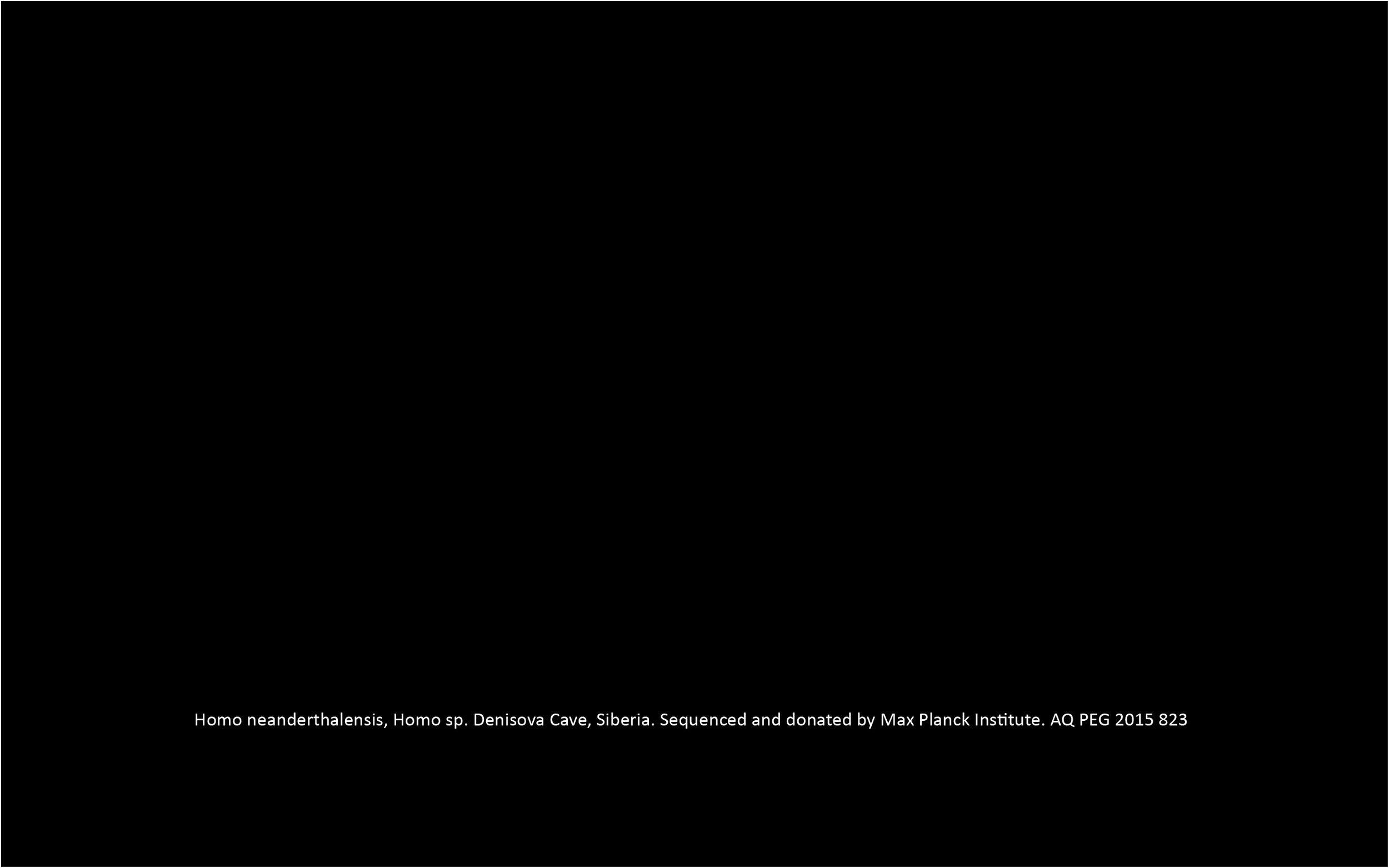
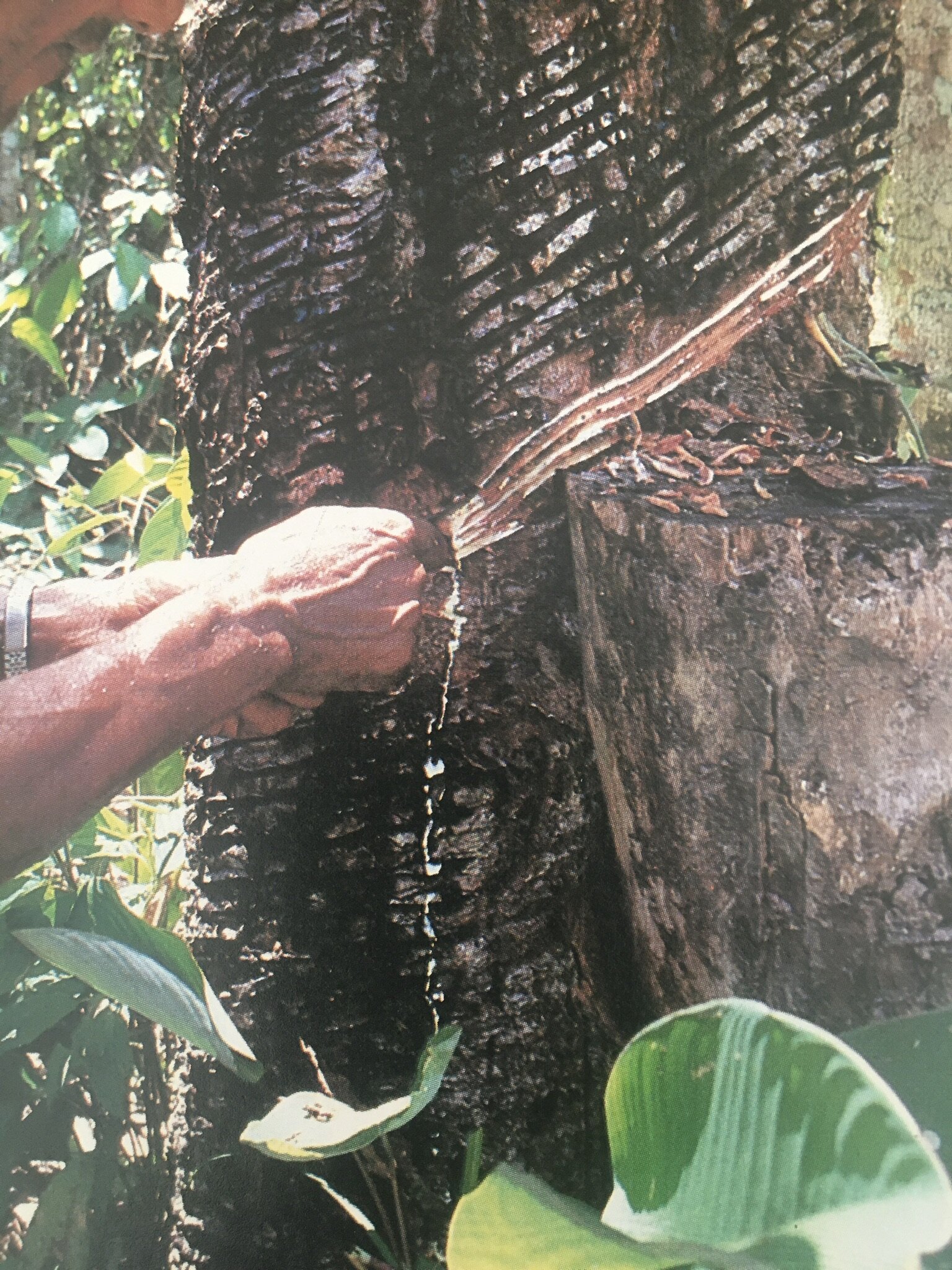
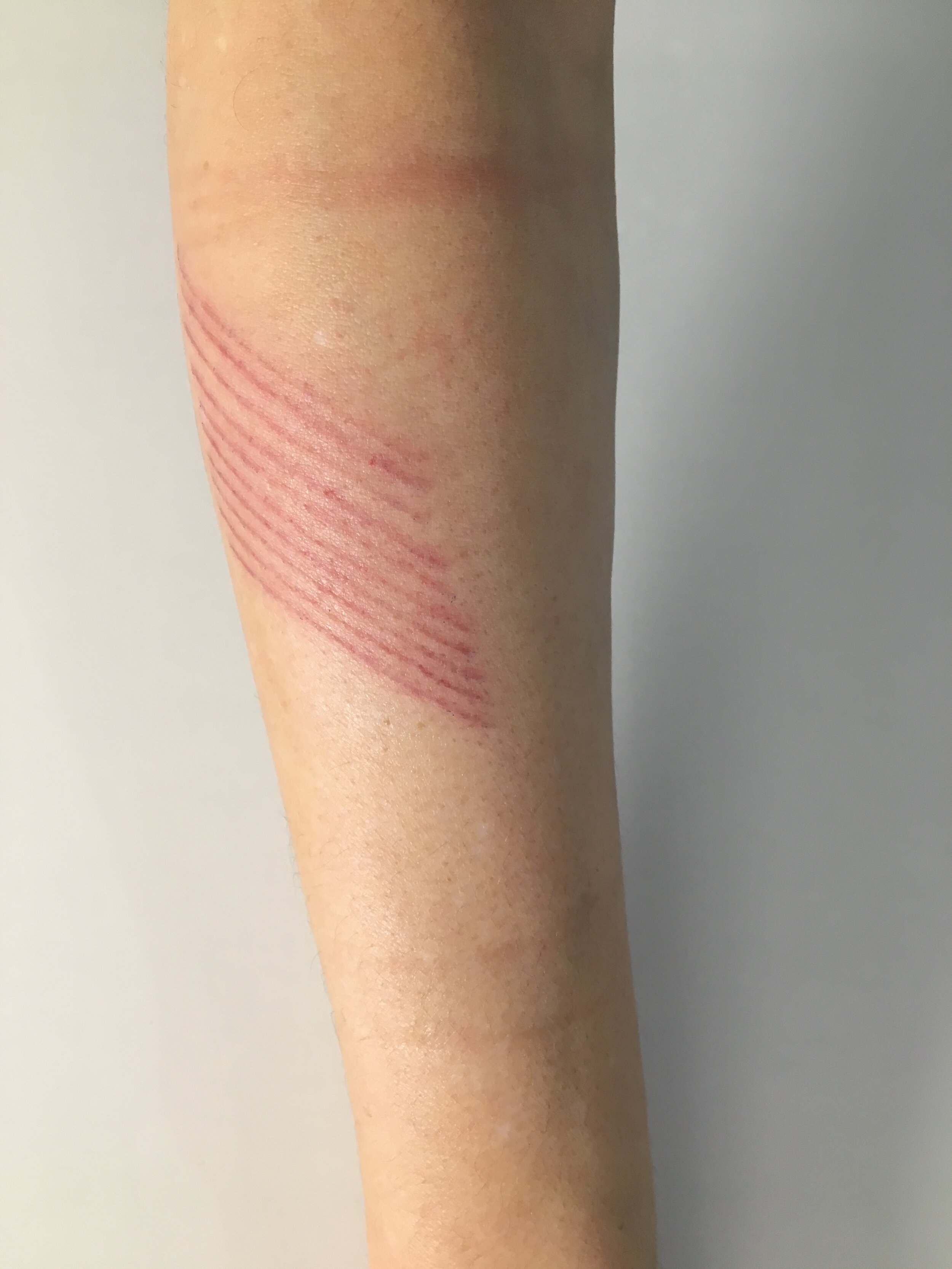
Exercises of power and submission
Dimensions variable
Multi-channel video and sound installation. Sound 1’30’’. Video (wall projection): 9’59’’. Video 2 screens: 1’30’’ each
2018 - ongoing
An English man cuts in my right arm (with tattoo needles) the same lines incised into rubber-tree trunks in order to harvest the latex. I become the rubber-tree and a visible/palpable place of extraction. My aim was to build a layered-multiple reading of the Natural History Museum’s text with the consequent editions to the discourse/translation, action voice/accent and sound. The document touches on Amazon tribe’s cosmogonies (all matter/nature is human) and alludes to Roger Casement’s black diaries where he annotated his interactions with indigenous people and their wild-ungendered sexuality. The arms are bodiless/faceless, detached. As the fossils, limbs are given a formally constructed body/identity through numbers, controlled scientific explanation and museography’s technical/pedagogical language.
The video shows flesh, body fluids, latex, and continuous touch/care, pleasure/pain and the messiness of human-other-than-human-matter’s entanglement. In contrast, I place the museum’s ever-present aseptic, static and systematised captions regarding Neanderthal and Denisovan’s fossils. Taxonomic descriptions, where they were found, dates, the DNA extraction technology’s (in)accuracy, and reference codes of every piece in the archive’s vitrine. I highlight the uncertainty of the purposely constructed “objective” truth of the scientific discourse in museums (apparatuses of regulation and subjectivity management/production), parallel to the instability of a politically-constructed body/identity.
I create a parallel between early twentieth century colonial and current data-molecular (terrestrial and extra-terrestrial) extraction. At the end of the video the captions are presented on a black backdrop, explaining who donated the DNA sequence of these fossils: Max Planck Institute has a net of scientists covering every possible area of study of life and living/not-yet-classified-as-living matter. From complex systems and environments to quantum optics… Some of the areas are: Solar System Research, Extra-terrestrial Physics, Plant Breeding Research, Animal Behaviour, Biological Cybernetics, Chemical Energy Conversion, Plasma Physics, Psycholinguistics (linked to genetics), Terrestrial Microbiology (there is not a classification without its counterpart: outer space—next/current colonial undertaking)... The institute/society/foundation is supported by public funds. However, it has specified percentage agreements per patent, and contacts in the industry/governments ready to buy all the new marketable thus, profitable technological innovations that they produce.
Natural History Museum London -captions:
Another mystery human…
We know from its shape that this skull was human.
But we don’t know which species it belonged to.
As more finds are made and techniques for extracting
and sequencing ancient DNA become more powerful, perhaps one day the mistery will be solved…
Homo sp. Maba, China, around 250.000 years old. EM 2441
Ancient human teeth…
DNA from this massive teeth matched DNA from a tiny finger bone found in Siberia.
This showed that the teeth belonged to a close human relative known as Denisovan.
In the absence of more fossil evidence, DNA alone can’t tell us much about what species looked like.
Homo sp. Denisova Cave, Siberia, around 50.000 years old. Denisova 4, Denisova 8,
PA EM 4389-90.
Neanderthal DNA (left)
Denisovan DNA (right)
These DNA samples were extracted from the bones of a female Denisovan.
They are 99% identical to modern human DNA.
Analysis suggests that the Neanderthal’s parents were closely related and that inbreeding among Neanderthals was common.
The Denisovan sample also shows there was little diversity among Denisovan populations.
Homo Neanderthalensis, Homo sp. Denisova Cave, Siberia.
Sequenced and donated by Max Planck Institute. AQ PEG 2015 823
>Performance documentation Letícia Laxon. Video and sound editing Juan Fernando Serrato. Last photograph from the book Colombia Amazónica. Universidad Nacional de Colombia. FEN Colombia. 1987.